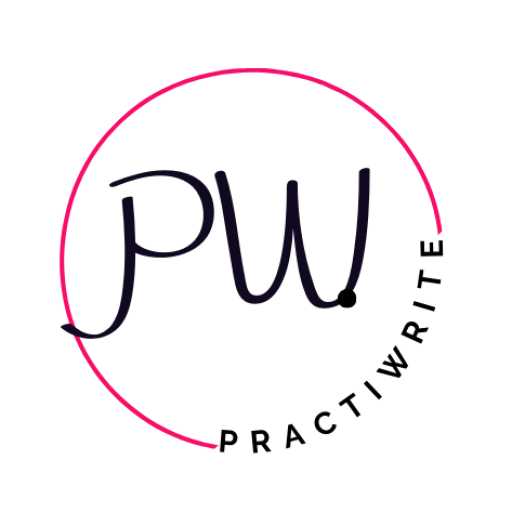Your fees are telling a story about your practice whether you realize it or not.
Set them too low, and you’re broadcasting “We’re just like everyone else… and we’ll take whatever insurance gives us.”
Price them too high without strategy, and you’ll watch patients quietly disappear to the guy down the street.
But set them intentionally, and you create a gravitational pull that draws in the exact kind of patients you actually want.
Patients who value quality over discounts, long-term health over quick fixes, and relationships over transactions.
The uncomfortable truth most dentists don’t want to admit is your prices are as much a marketing tool as they are a profitability tool. They tell patients whether you’re the “Walmart of dentistry” or the “Ritz-Carlton of smiles.”
And if your brand is aiming for high-value, high-trust patients? You can’t be afraid of higher numbers.
You just need to know how to make those numbers make sense in your patients’ minds.
That means three things:
- Your whole team must know how to sell value without sounding “salesy.” (If veneers last five years or more, that’s not a cost—it’s an investment in confidence and health.)
- You need to design packages that make patients feel smart about saying yes. (Five whitening sessions for a single flat rate? That’s a win for everyone.)
- You need to anchor your pricing in a way that patients understand why you charge what you charge and why it’s worth it.
Let’s break down the science and strategy of dental fee setting tips that not only keep your chairs full, but keep the right chairs full.
I’ll also share some quick case studies from practices that have nailed this transition, proving that with the right psychology, you can set fees that make patients say yes without blinking.
Ready? Let’s talk about how to price your services so they sell themselves.
Table of Contents
Understanding Pricing Psychology in Dentistry
Most dentists set fees by one of three methods:
- Copy whatever the practice down the street is charging.
- Use a spreadsheet, insurance reimbursement rates, and a “this feels right” guess.
- Set a number that “seems fair” without thinking about the perceived value to the patient.
None of these approaches will get you where you want to go if your goal is to build a thriving Fee-For-Service (FFS) practice.
Because patients don’t just buy dental services. They buy what those services mean to them:
- Health
- Longevity
- Confidence
- Convenience
And the way you present your fees heavily influences whether they say yes.
According to behavioral economics research, over 60% of buying decisions are based on emotional perception rather than actual price. That means a patient’s decision to accept your treatment plan has less to do with the raw number on the invoice and more to do with whether they feel it’s worth it.
In dentistry, pricing psychology boils down to two core realities:
Price influences perceived quality
Multiple studies confirm that people often associate higher prices with higher quality, even in healthcare. One analysis found that patients assumed more expensive providers were more skilled or offered better care.
The context you create matters
If a patient sees your veneer package next to a higher “anchor” option (like a full cosmetic makeover) they’ll perceive the veneers as more affordable, even if the number hasn’t changed.
Your fees send a message. If your message is “We are premium, personalized, and worth it,” your pricing has to match that.
And your team has to be able to back it up with confidence and clarity.
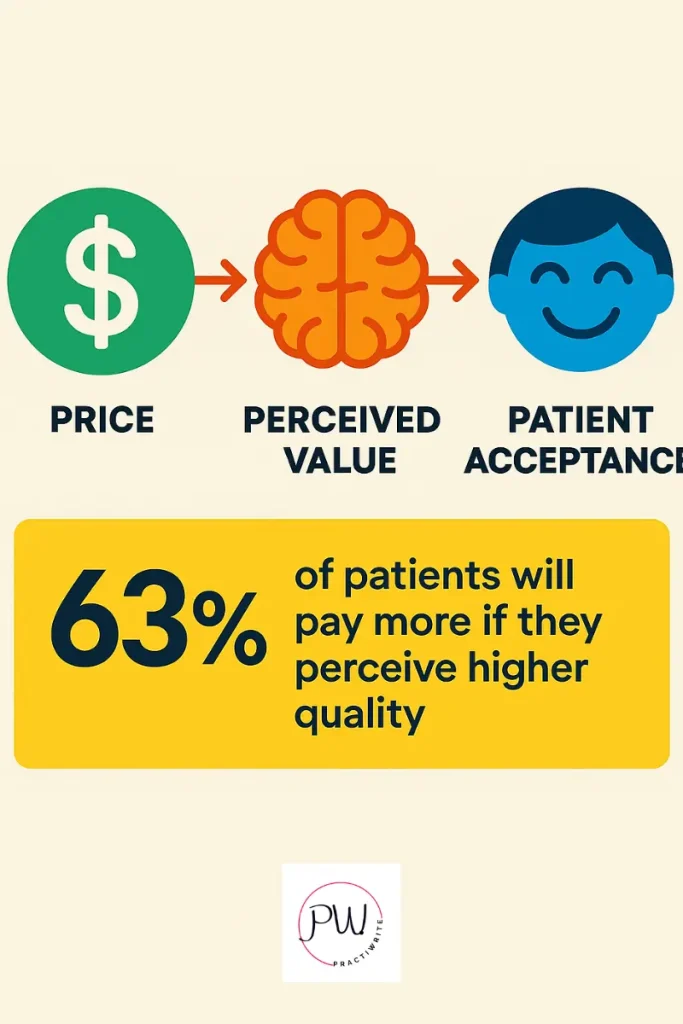
3 Common Pricing Pitfalls Dental Practices Fall Into
If there’s one thing I’ve learned from working with dentists making the leap to Fee-For-Service, it’s this: most pricing mistakes aren’t in the math, they’re in the mindset. Here are the big three traps that can tank your transition:
Pitfall #1: Undercharging Out of Fear
You’re worried that if you raise your fees, patients will walk. So you set them low… and unintentionally signal “We’re bargain care.” That’s not the message you want when building a premium brand.
According to Dental Economics, patients rarely choose the lowest-cost option. They choose the option they perceive as the best value.
And “best” doesn’t always mean cheapest.
In fact, a Stanford University study showed that when people believed a product cost more, their brain’s pleasure centers lit up more while using it. This means price affects experience.
Pitfall #2: Pricing Without a Value Story
A $1,500 veneer and a $500 veneer aren’t the same thing… unless you fail to explain the difference.
If your team can’t connect the dots between cost and long-term benefit, like how a veneer is an investment that pays off every time a patient smiles for the next 5–10 years, patients will default to seeing it as an expense rather than a value.
Research shows that 63% of patients are willing to pay more for healthcare if they perceive higher quality. But perception requires communication, especially from your front desk and treatment coordinator.
Pitfall #3: The “A La Carte” Problem
Itemizing every single procedure and quoting them separately is a great way to give patients sticker shock. Bundling services into packages not only simplifies decisions and increases perceived value.
Think about offering a 5-session whitening package for a flat rate. The price is easier to digest, and the patient feels like they’re getting a deal even if the math is equal.
One practice I consulted with in Arizona shifted from charging $300 per whitening session to a $1,200 “Smile Bright” package (five sessions over 18 months). The result was they increased whitening revenue by 45% in one year, and patient retention for follow-up visits improved because people came back to use their sessions.
Strategic Dental Fee Setting Tips To Maximize Patient Acceptance
You don’t need to manipulate patients.
You need to make decisions stupid easy.
These strategies do exactly that, with clear framing, obvious value, and pricing that signals quality without causing whiplash.
Anchor Pricing: Set the Frame Before You Say the Number
Humans don’t evaluate prices in a vacuum. We compare them to the first number we see. That “first number” is your anchor.
How to use it in dentistry:
- Show a comprehensive smile makeover fee (your high anchor) alongside a porcelain veneer package. Suddenly, the veneer fee feels reasonable (even premium) rather than “expensive.”
- Present annual membership first (anchor), then pay-as-you-go fees. Patients immediately see membership value.
Why it works:
- The anchoring effect is a foundational behavioral economics bias.
- Price can shift perceived quality in healthcare decisions.
Practical example script for your front office team:
“Most patients comparing options look at our Full Smile Rejuvenation (which includes X, Y, Z) at around $X as the top end. If you’re focused on the areas that bother you most, our veneer package is $Y and delivers 90% of that cosmetic transformation without the full treatment scope.”
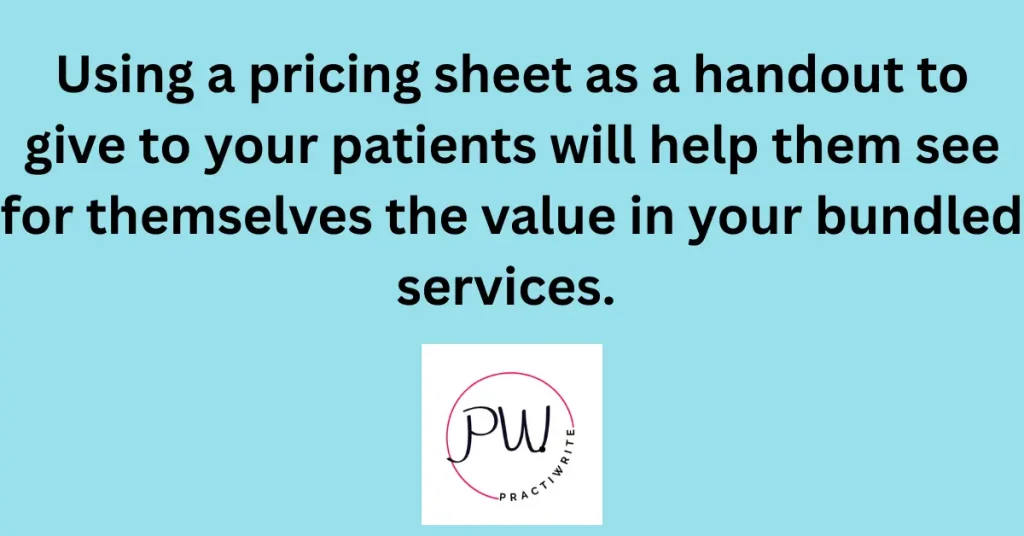
Tiered Pricing & Bundling: Guide the “Yes” With Choice Architecture
Patients freeze when they’re overwhelmed by à la carte line items. Bundle to simplify.
How to implement:
- Good / Better / Best cosmetic tiers (e.g., Whitening Essentials, Confidence Package: Whitening + Bonding, Signature Smile: Veneers + Whitening + Retainers).
- Whitening Package example: 5 sessions over 18 months for a flat rate. Patients see continuity, predictability, and a built-in follow-up plan. You reduce churn.
Why it works:
- Bundling increases perceived value and reduces decision friction.
- Fewer choices + clearer tiers = higher conversions.
Practical example script for your front office team:
“Most patients choose the Confidence Package because it includes whitening now plus professional touch-ups later, so your smile stays bright without extra appointments to schedule or surprise fees.”
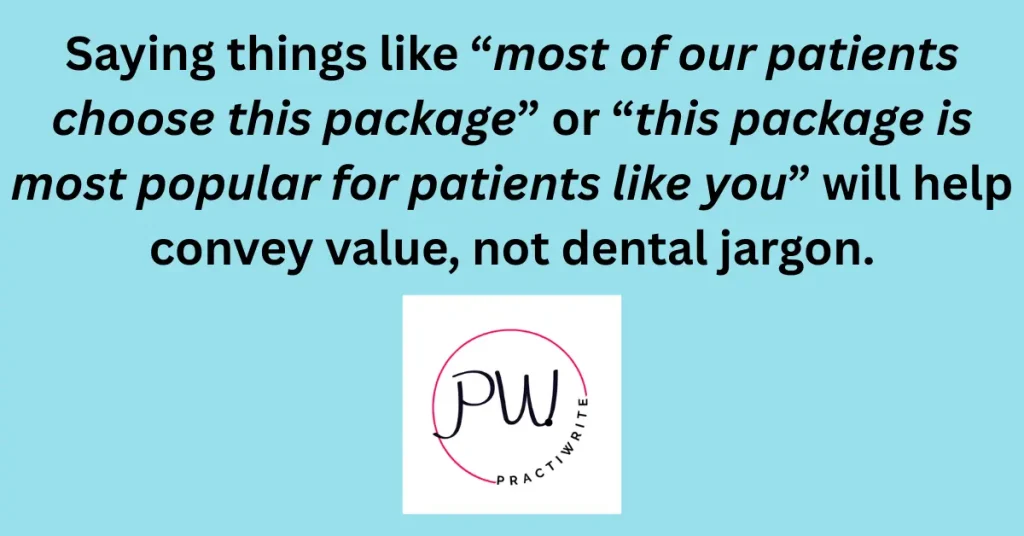
Charm Pricing: The 9s, 7s, and Round Numbers That Shape Perception
Yes, the ending digit matters, especially on consumer-facing services (whitening, aligners, cosmetic bundles).
How to use it:
- Use $1,995 instead of $2,000 for consumer services; ending in 9s signals a deal and often converts better.
- For premium, clinical procedures you want to signal gravitas and quality (implants, comprehensive cosmetic), consider rounded numbers ($4,800) to avoid “retail-y” vibes.
Why it works:
- 9-ending prices increase demand in many categories.
- Context matters: rounded numbers can increase perceived quality for premium offers.
Practiwrite tip: Stay consistent. Mixing $1,997, $2,000, and $1,999 across similar services feels sloppy.
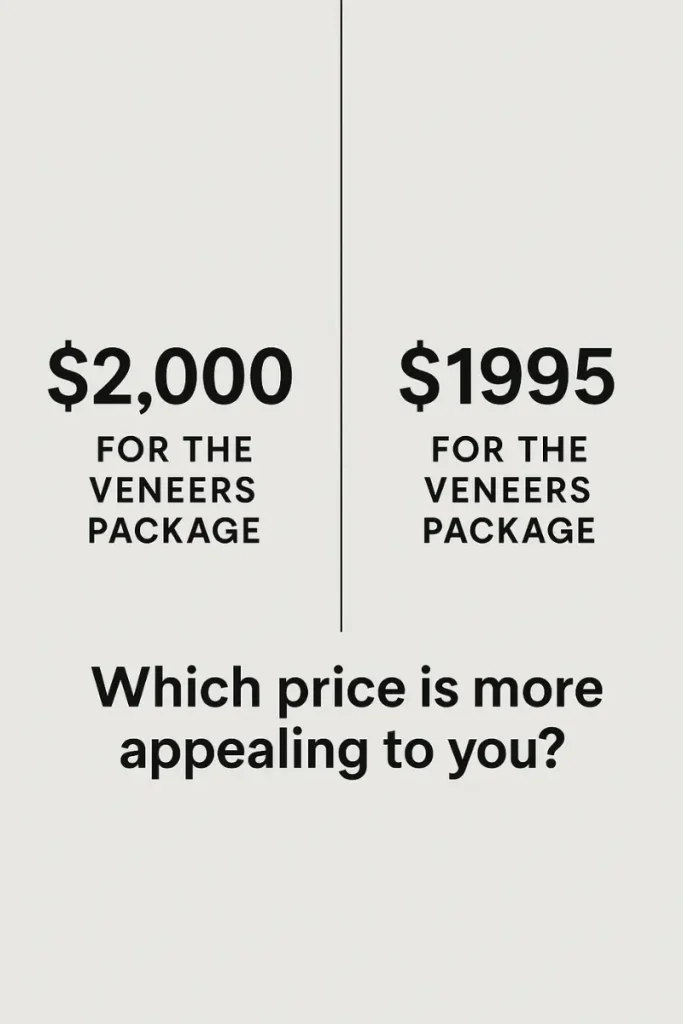
Price Framing: Monthly, Per-Visit, and Lifetime Value
Patients don’t buy a number; they buy outcomes over time.
How to use it:
- Per-day or per-month framing for cosmetic/aligner cases with financing (“About $5/day over 24 months”).
- Lifetime or multi-year framing for veneers and implants (“A 7–10 year confidence investment—about $X/year”).
Why it works:
- Time-based framing reduces pain-of-paying and increases acceptability.
Practical example script for your front office team:
“Most of our patients look at this as a long-term investment. Spread over five years, it’s about $58/month. Less than a family phone plan. And it’s something you see every time you look in the mirror.”
Show the Value Story Before the Price
Prices land best when the value is already understood.
How to implement (train the team):
- Before quoting: state the problem, the plan, and the payoff (function + esthetics + longevity).
- Use social proof (before/afters, reviews, cases) right before the quote.
- Use contrast: what happens if we do nothing vs. what happens with this treatment.
Why it works:
- People pay more when they perceive quality and outcomes.
Practical example script for your front office team:
“Veneers are a five-to-ten-year solution for shape, color, and symmetry. They don’t just look good on day one. They stay camera-ready. Here are two cases similar to yours; this patient’s were placed seven years ago.”
Package Your Services (and Make the Math Easy)
This is where a lot of practices leave money on the table. Package = clarity.
Examples you can ship tomorrow:
- Whitening 5-Pack (flat rate, includes take-home trays + touch-up syringes).
- Aligner Success Bundle (aligners + retainers + whitening + 1-year refinement).
- Veneer Confidence Plan (X veneers + whitening + night guard + 2 follow-up esthetic polishes).
Why it works:
- Bundles reduce sticker shock, prevent nickel-and-diming, and increase perceived value.
Practical example script for your front office team:
“Our Veneer Confidence Plan is turnkey. No add-ons later. Everything you need for a long-lasting result is built in.”
Visual idea: a checklist card per package with big green checkmarks and one price in large font.
Financing and Membership: Reduce Friction at the Point of Decision
Don’t bury your patients in information. Make financing obvious and shame-free.
How to implement:
- Show three ways to pay on every treatment plan: prepay (small courtesy), monthly financing, membership + financing for routine care.
- Put monthly payment in the top-right corner of the treatment plan. Make it easy to say yes.
Why it works:
- Splitting costs across time reduces pain-of-paying (mental accounting + loss aversion framing).
- Membership plans increase recall and treatment completion (general overviews: Dental membership plan for context; replace with your preferred membership platform link later).
A Visual idea you can use: a one-page “Ways to Pay” insert with three boxes, each showing the outcome and the monthly number.
Mini Case Study (Hybrid to FFS With Smart Pricing)
Context: A 3-op suburban practice in the Southeast moved from heavy PPO reliance to a hybrid model over 18 months, then to ~80% FFS.
Their goals: fewer write-offs, better case acceptance on cosmetic and implant cases, and less chaos at the front desk.
What they changed:
- Introduced Good/Better/Best cosmetic bundles (Whitening Essentials, Confidence Package, Signature Smile).
- Set a high anchor with a “Full Smile Rejuvenation” plan on their consult menu.
- Switched whitening from $300 per session to a $1,200 5-session package over 18 months.
- Retrained the front office on a value-first script (problem → plan → payoff → proof), and framed payments per month on all proposals.
Results (first 9–12 months):
- Cosmetic case acceptance increased from ~38% to ~56% (measured by accepted value ÷ presented value).
- Whitening revenue up ~40% year-over-year (package-driven).
- Average write-off rate dropped as PPO volume decreased; collection percentage improved by ~6 points.
- Hygiene reappointment rate ticked up ~8% (whitening packages + membership tethered patients to follow-ups).
Why it worked: Bundles simplified decisions. Anchoring and visual menus made mid-tier choices feel smart. The team stopped apologizing for price and started telling the value story, before the number.
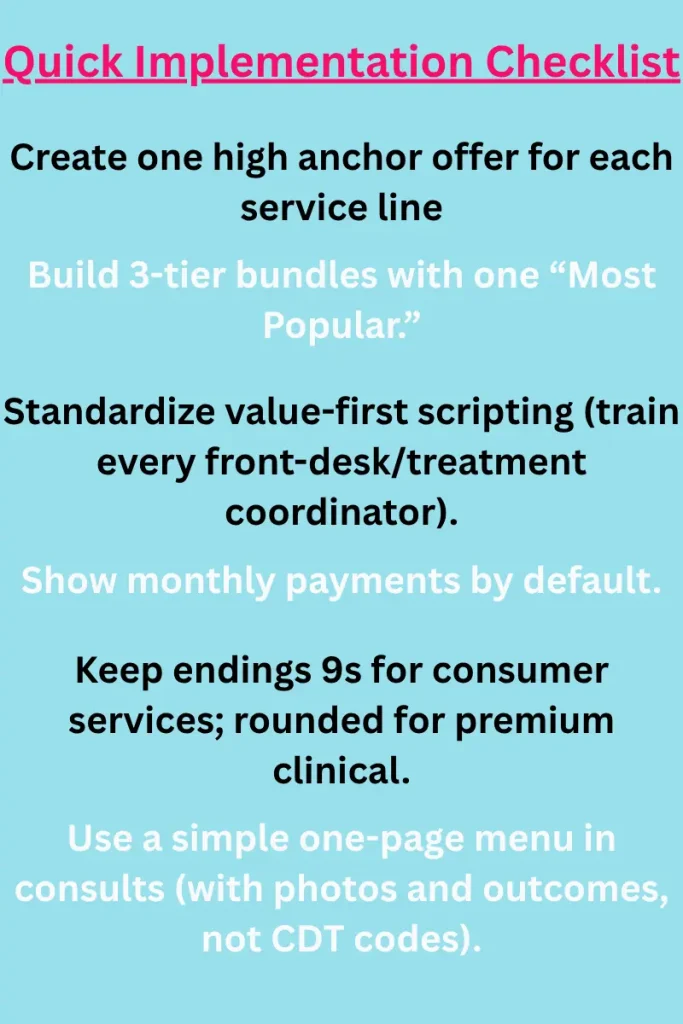
How to Research & Set Competitive Yet Profitable Fees
The mistake I’ve seen dentists make the most is they either price based on what their PPOs used to pay (bad baseline), or they copy the guy down the street (bad strategy). Neither of those numbers reflect the true value of your care or your actual profitability needs.
If you’re going FFS (or even hybrid) you have to work backward from profit goals and positioning, not just market averages. Here’s the process:
Step 1: Know Your Costs Cold
Before you even look at market rates, figure out what each procedure costs you to deliver. That includes:
- Materials and lab fees
- Staff time and wages
- Overhead per operatory per hour (yes, you should calculate this)
If you don’t know your overhead per hour, you’re setting fees blind. In U.S. dental practices, overhead averages 60–75% of collections, which means if your fees aren’t covering that plus your profit target, you’re already losing.
Step 2: Study the Market, But Don’t Marry It
Check what other practices in your zip code and patient catchment area charge. Resources:
- Fair Health Consumer – Pulls average fees by ZIP and procedure.
- ADA Survey of Dental Fees – National data broken down by percentile.
Aim to understand the range, not match it. If you want a premium brand, you should be at (or slightly above) the 75th percentile.
Just be prepared to show the why.
Step 3: Position Your Fees With Intention
Your price is a positioning tool. If you want the “high-value patient” market, you can’t be mid-pack and expect to stand out. You don’t need to be the most expensive, but you do need to signal quality with your fees.
For example:
- If a veneer in your area runs $1,200–$1,800, setting yours at $1,650 with a clear value narrative says, “We are premium, but not unattainable.”
- Then you use your anchor package (like a $12,000 full-smile makeover) to make that $1,650 feel like a smart choice.
Step 4: Train Your Team on Value-First Fee Presentation
Your number can be perfect on paper, but if your front desk says it with a voice like they’re bracing for a punch, you’ve lost the sale. Patients read hesitation as “maybe this isn’t worth it.”
Before fees are even mentioned, your team should:
- Reframe the treatment as an investment. “These veneers will last you 5–10 years, so if you break it down annually, it’s about the same as your cell phone bill; only this is something you see every time you smile.”
- Show visual proof. Before-and-after photos of similar cases.
- Give payment options immediately. Financing takes price from “I can’t afford it” to “This is doable.”
Step 5: Review and Adjust Annually
Don’t wait five years to raise fees. Only Netflix can do that.
Inflation in dental supply costs alone has been tracking at 3–4% annually (Bureau of Labor Statistics), so if you don’t adjust yearly, you’re giving yourself a pay cut.
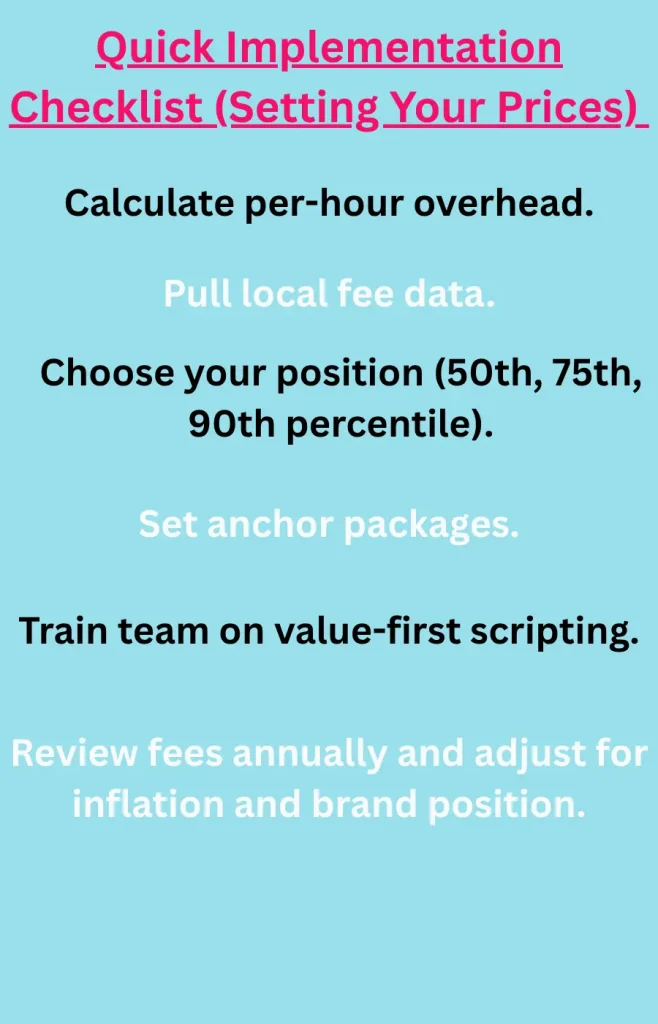
Clearly Communicating Fees to Patients
The reality is, you can have the perfect pricing strategy, airtight math, and beautiful packages… and still lose the patient if the way you present the fee is clumsy, defensive, or apologetic.
Pricing is part numbers, part performance. The performance isn’t about acting.
It’s about delivering the number with calm, matter-of-fact confidence and a crystal-clear value story.
A 2023 PatientPop survey found that patients are 4.5x more likely to accept a treatment plan when the benefits are clearly explained before price is mentioned.
It’s not the number that scares them.
It’s a number without context.
Lead With Value, Not Price
Before you ever say a dollar amount, tell the patient:
- The problem you’re solving (and what happens if it’s not addressed)
- The plan you recommend (in simple, non-jargony language)
- The payoff they’ll experience (longevity, appearance, confidence, health benefits)
Take This Example from a Veneer Case:
“Your enamel wear is affecting both the look and structure of your teeth. Our plan is six porcelain veneers that not only restore your smile’s appearance but protect the teeth underneath. These are designed to last 5–10 years with proper care. That’s a decade of confidence in photos, at work, and every time you smile.”
Use “Say This, Not That” Language
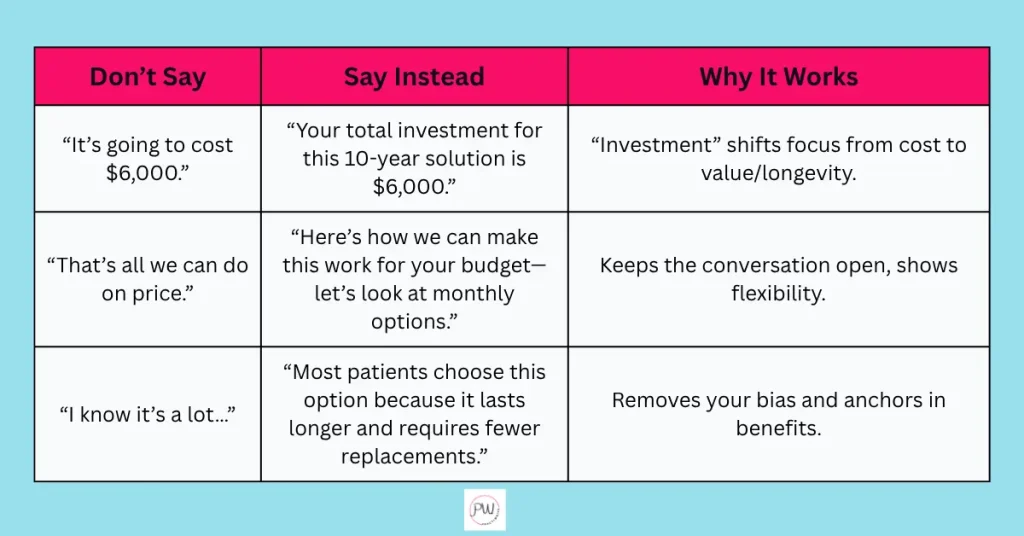
Frame Time to Reduce Sticker Shock
Breaking down cost into smaller time units softens the impact.
- “That’s about $125/month with our in-house financing.”
- “Over five years, this comes out to less than a dollar a day.”
Behavioral economics calls this mental accounting (Thaler, 1999) and it works because the brain prefers smaller, more digestible numbers.
Always Pair the Number with Proof
The moment after you give the fee is the danger zone. Don’t let awkward silence suggest “too expensive.” Instead, follow the price with a visual proof point:
- Before/after photos of similar cases
- A testimonial from a patient who invested in the same service
- A quick video or model showing longevity
Train the Front Office Like It’s a Scripted Show
Every patient, whether they call in or come for a consult, should hear the same confident language. Role-play fee conversations until your team can deliver them without hesitation or filler words.
If your front office flinches when they say the number, patients will too. Confidence is contagious.
Real-Life Examples: Dental Practices Winning at Pricing Psychology
Theory is nice. But nothing gets a dentist’s attention faster than hearing about someone else who actually pulled it off AND kept their chairs full.
Example 1: Suburban Cosmetic-Focused Practice Goes Premium
The Situation: A 4-op practice in Austin was stuck at PPO rates while doing high-end cosmetic work. Veneers were priced to “blend in” with insurance-anchored competitors, so case acceptance on full cosmetic cases hovered at 36%.
The Change:
- Raised veneer fees 18% above local average (anchored with a $14,500 “Full Smile Transformation” package).
- Switched whitening to a $1,500 5-session bundle (with take-home trays).
- Retrained front office on a problem → plan → payoff script.
The Result: Within 9 months, veneer case acceptance jumped to 54%, whitening revenue was up 42%, and the team reported fewer “Can you do better on the price?” conversations.
Example 2: Rural Hybrid Practice Gains Confidence to Hold Fees
The Situation: A rural Midwest dentist wanted to keep PPOs for basic care but go FFS on implants and cosmetic cases. Fear of losing patients kept fees just 5% above PPO maximums.
The Change:
- Introduced 3-tier implant packages (Basic, Premium, Premium Plus) with clear outcome-focused inclusions.
- Showed per-month payment on all plans.
- Built a before/after wall in consult rooms.
The Result: Implant acceptance increased from 41% to 63%, and more patients chose mid-tier packages over the basic level. Interestingly, existing PPO patients began asking about cosmetic upgrades, seeing the practice as more “high-end.”
Example 3: Urban Startup Leverages Bundles to Stand Out
The Situation: New FFS-only practice in a competitive metro needed a differentiator without competing on price.
The Change:
- Launched with bundled cosmetic and preventive packages (Confidence Plan: veneers + whitening + night guard).
- Used rounded pricing for premium services, 9-ending prices for consumer-facing packages.
- Made financing options prominent in every presentation.
The Result: First-year patient acceptance rate hit 68% for cosmetic cases, and package-based patients booked an average of 2.3 more follow-up visits in 12 months compared to single-service patients.
Key Takeaways I Want You To See Across All Three:
- Higher fees didn’t scare patients off when paired with clear value stories.
- Bundles simplified decisions and increased acceptance.
- Anchoring high-priced “dream” options made mid-tier choices feel like smart buys.
- Team confidence was as important as the actual numbers.
FAQ’s: Common Questions Dentists Have About Setting Fees
Have questions about setting fees for your services? Let’s have em!
Q: Won’t higher fees drive away my existing patients?
A: Some patients will leave and that’s not always a bad thing. You’re building a practice designed for patients who value quality, time, and personalized care.
In the case studies above, practices typically lost fewer than 15% of patients post-fee adjustment, but the ones who stayed spent more, referred more, and required fewer write-offs.
Q: How much higher than PPO rates should I go?
A: If you’re positioning as premium, aim for 75th–90th percentile in your area based on ADA fee surveys and Fair Health Consumer data. Just remember, price without value is a number; price with a value story is an investment.
Q: What if my team feels uncomfortable quoting higher prices?
A: That’s a training issue, not a pricing issue. Role-play value-first scripts until the team delivers them naturally. Patients take their cue from your staff. If they hesitate, patients will too (see how critical front office staff training is?).
Q: Should I post my fees online?
A: For high-ticket procedures like implants or veneers, post “starting at” ranges with value language. This pre-frames expectations and filters out pure bargain-hunters without scaring off serious patients.
Q: Is discounting a bad idea?
A: Blanket discounts erode perceived value. If you want to sweeten the deal, do it with value adds (extra whitening syringes, complimentary retainers) instead of slashing prices.
Q: How often should I raise my fees?
A: Review annually. Supply and labor costs are rising at 3–4% per year (Bureau of Labor Statistics), and waiting years between adjustments means you’re quietly giving yourself a pay cut.
Avoiding Patient Sticker Shock: 6 Best Practices
Sticker shock isn’t as much about the actual number as it is about the gap between what a patient expected to pay and what you just told them.
Your job is to shrink that gap before you ever get to the fee. Here are 6 ways to do that:
1. Pre-Frame the Investment
Before presenting your treatment plan, casually set the stage with context:
- “Cosmetic treatments like veneers are a long-term investment—most last 5–10 years.”
- “Implant cases like yours often run between X and Y, depending on specifics. Let me walk you through what’s included in your plan so you see exactly what you’re getting.”
Why it works: Price expectations formed early in the conversation reduce the shock factor later.
2. Present the Package, Not the Parts
Patients process one number more easily than six line items. Bundle whenever possible and present a total investment, then break it into monthly payments.
Example: Instead of itemizing each veneer, whitening session, and night guard, offer a “Confidence Plan” with one all-inclusive price and highlight everything they get.
3. Use Tiered Options
When patients see only one price, it’s yes or no. When they see three, it’s which one.
- Basic, Premium, and Premium Plus options give patients agency.
- Anchor with your high-end package to make the middle feel comfortable.
4. Lead With the Highest Number
Always present the most expensive package first, then work down. This sets an anchor so the next numbers feel smaller in comparison (anchoring bias is well documented in behavioral economics).
5. Let Silence Work for You
After you present the fee, stop talking. Filling the silence with justifications or discounts tells the patient you think it’s too high. Instead, give them a moment to process.
6. Offer Payment Solutions Immediately
Don’t wait for the patient to ask. End the presentation with:
- “If you’d like to spread this out, here’s what it would look like monthly.”
- “We also have in-house membership options that keep your preventive care covered.”
When financing is baked into the conversation, patients feel you’ve already thought about their budget.
A Final Word & Some Encouragement
To be blunt, anyone can be the cheapest dentist in town. It takes guts to be the one who charges what your care is actually worth.
Pricing psychology is about positioning your services so the right patients recognize the value you deliver. It’s about training your team to speak with confidence, creating packages that feel like smart decisions, and framing costs in a way that makes them easy to say yes to.
Will some people walk away? Yes. And that’s okay!
Because the patients who stay (and the ones you attract) will trust you, respect your expertise, and invest in their health without haggling over every line item.
You didn’t go into dentistry to run a discount store.
You went into it to change lives, deliver exceptional care, and build a practice that supports your vision, not an insurance company’s spreadsheet.
If you’re ready to stop undercharging, start presenting value with confidence, and finally attract the kind of patients who say yes without blinking…
Schedule your strategy call today and get your personalized Dental Practice Roadmap. See where you stand compared to your competitors. And see where you can be in six months.
So you’re prepared when you step away from your PPOs.
And step into the freedom (and income) you always deserved.
10+ year content strategist, writer, author, and SEO consultant. I work exclusively with dental practices that want to grow and dominate their local areas.
